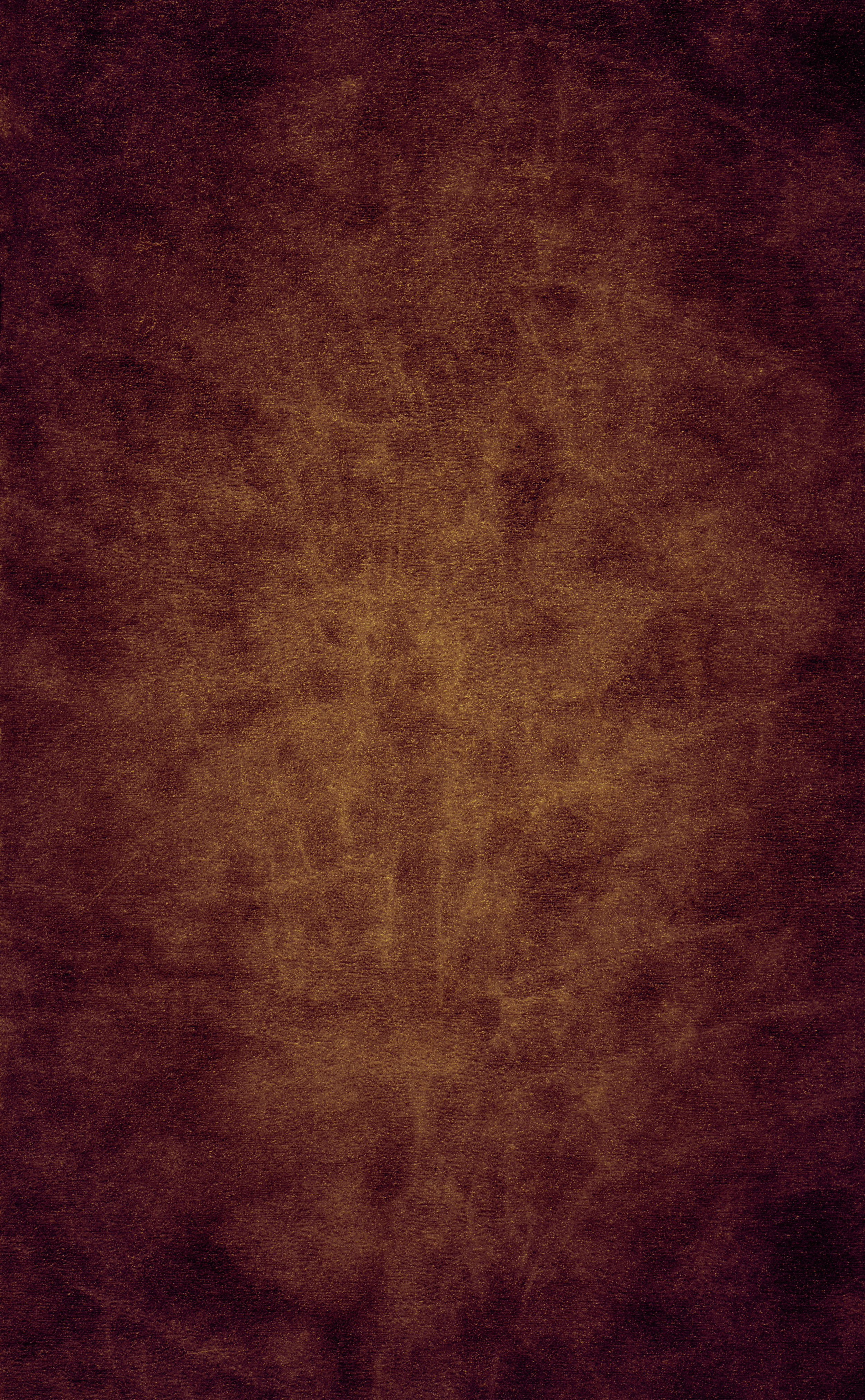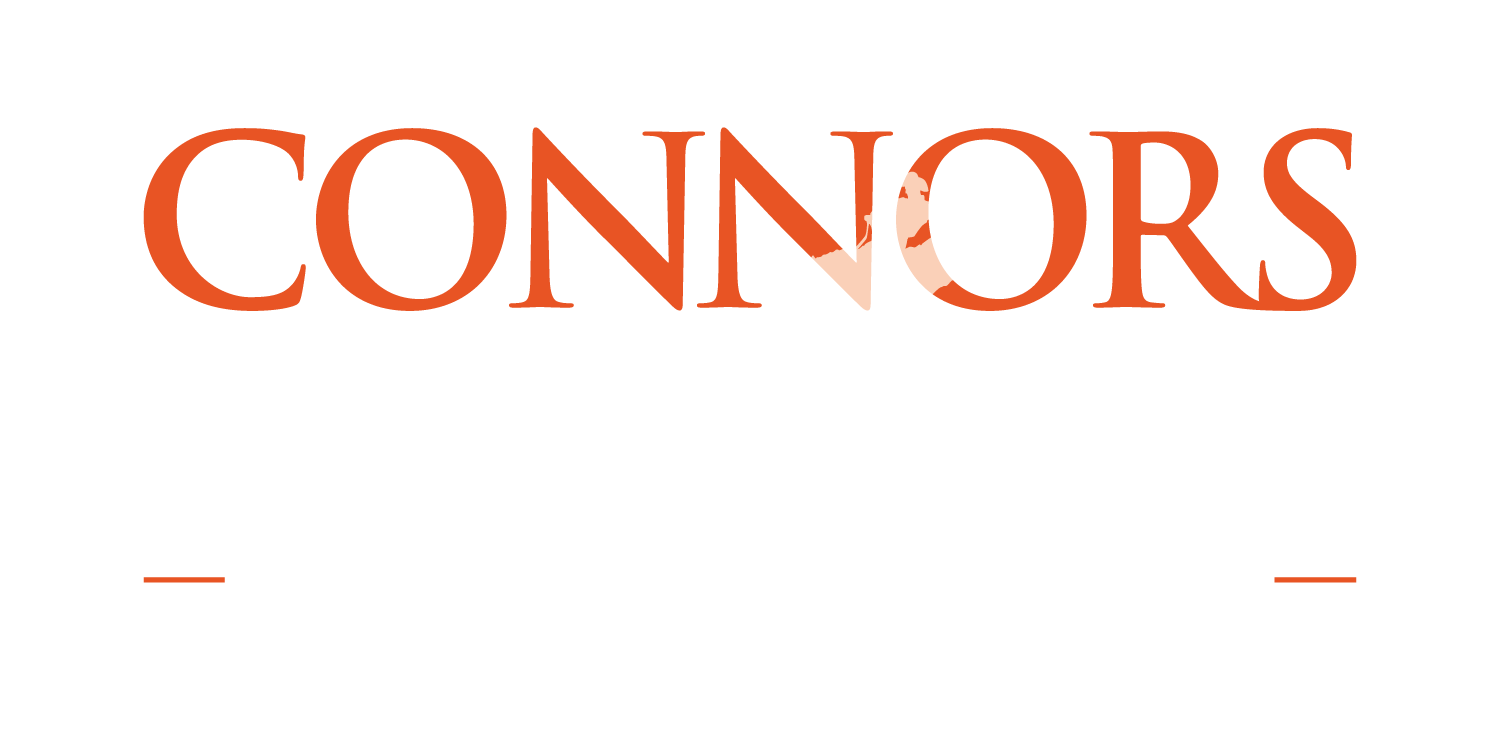
December 2016, alumni and friends from across the country celebrated the impact Connors State College has made in the agricultural industry with the dedication of the Agriculture Hall of Fame.
Education for Oklahomans
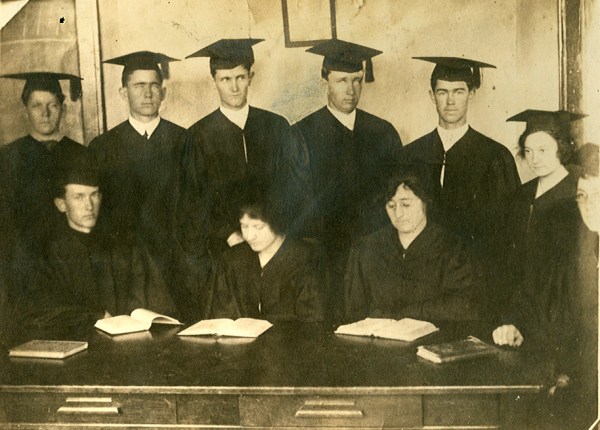
Around the time of statehood, eastern Oklahoma was dotted with bustling rural communities and small family farms.
J.P. Connors
The early years were lean ones. Drought, crop failures, poor roads, and practically nonexistent communication systems all served to isolate eastern Oklahomans from major commerce centers and educational opportunities for citizens past the elementary level.
Oklahoma’s first legislature created six agricultural schools to provide rural farm children secondary education with a farm life emphasis. Connors State School of Agriculture came into existence along with the state in 1907. Section 7, Article 13 of the State Constitution authorized “the establishment and maintenance of secondary agriculture schools in each Supreme Court Judicial District, with branch agricultural experiment stations and short courses in connection therewith.” Named in honor of the State Board of Agriculture president J.P. Connors, the high school was established to serve district one; however, enrollment could come from any part of the state.
Connors State School of Agriculture inaugural class, 1909.
The first session opened in February 1909 in the Warner Public School building, with the offering of a three-year course in agriculture and domestic economy, a three-year preparatory course and elective course of special character, and short courses for farmers. Under the leadership of Jefferson A. Liner and four faculty members, 15 students were enrolled. Three weeks later, enrollment had grown to 35 students. In 1912, Connors had nine total high school graduates. An act of Oklahoma’s eleventh legislature in 1927 changed the institution’s name to Connors State Agriculture College and its rank to junior college. In 1929, there were eight total junior college graduates, and by 1939, that number had jumped to 64.
Students engaged in hands-on production agriculture. Specifially, picking peas.
In the beginning, coursework focused heavily on manual labor related tasks such as milking, hoeing weeds, and others associated with production agriculture. Students were required to spend part of their time on the farm and, as far as was practical, conduct experiments along some particular line of agriculture investigation. Today, hands-on learning is still a component of a student’s academic pathway, yet more emphasis is placed on peer-reviewed scientific research in the classroom.
With a campus in both Warner and Muskogee, now Connors State College serves a broad spectrum of students with varying educational goals. While high school diplomas stopped being conferred in 1939, the institution still offers concurrent enrollment for high school students who wish to earn college credits.
Students butchering hogs as part of hands-on production agriculture lessons.
Initially, all students were part of the division of agriculture, as it was the only department on campus. All regular coursework such as chemistry and math were taught within its bounds. Today, agriculture is one of six academic units at CSC, where students may earn an Associate's of Science degree in Agriculture and focus their study within any of the fourteen emphasis areas.
Total college enrollment currently exceeds 3,000 students, while approximately 200 of those declare agriculture as their major field of study.
Faces of our Foundation
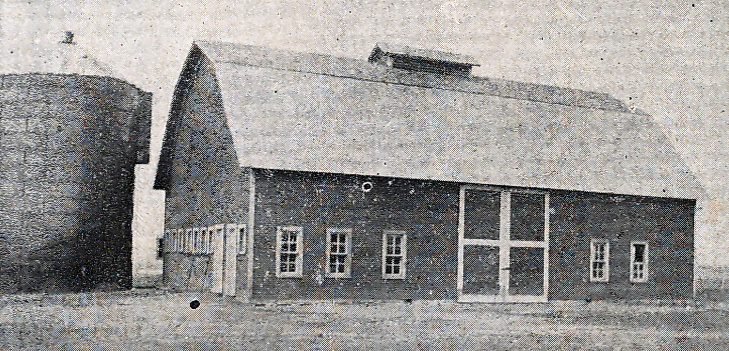
Robert A. Hodges 1946 - 1972
Robert A. Hodges is considered the father of Connors’ current agriculture program. He started the bull test, Aggie Day, and formalized the agriculture judging teams. He also brought positive attention to the campus with championship Holstein and Hereford cattle herds, and Duroc hogs. The farm not only provided food for the college, but also turned a small profit.
Gary Harding 1977 -2004
Gary Harding continued the work of Robert Hodges and further expanded the agriculture program. Harding reinitiated the bull test after a brief hiatus in the 1970s, and began the Simmental, Angus, and championship Santa Gertrudis herds. He was instrumental in the college acquiring a thirteen-hundred-acre ranch south of Warner that now bears his name.
Fred Williams 1970 -2009
Fred Williams began Connors’ equine program in the late 1970s. Fred and Buddy Lassiter reorganized the rodeo club in the 1980s after a hiatus of over several decades. In 1998, the rodeo team became NIRA-sanctioned allowing collegiate competition. The indoor arena is named in his honor.
Jerry McPeak 1978 -2004
Jerry McPeak, coach of the livestock judging team, with Gary Harding and Dr. Ron Ramming, revitalized the agriculture program beginning in the late 1970s. After leaving Connors, McPeak ran for and won a seat in the Oklahoma House of Representatives. The Agriculture Hall of Fame facility is named in his honor.
Gary Updyke 1979 -2001
Gary Updyke began his career at Connors as Dean of Agriculture and Technical Education in 1979. Under his reign, the equine science degree program was developed, the rodeo team was formed, and other technical degree programs were initiated. He also served as Vice President of Academics and Vice President of Institutional Services.
Faculty, staff & coaches who dedicated their time and knowledge to our programs:
Rick Boles
J.M. Camp
Scott Clawson
Randy Coates
Ralph Collins
Dustin Clark
Troy Clay
Colby Crissman
J.M. Daily
Mike Duvall
Troy Dyer
Daniel E. Edmonds
W. Clifford Elder
Kara Focht
Fred Forbes
Clyde Fox
Dr. Joe Garrett
Debra Golden
Ray L. Graves
Brandon Gunn
Nathan Haikey
Gary Harding
Nolan Hildebrand
Robert A. Hodges
Robert Holtfreter
Walter Hopkins
Don Hubbard
B.C. Huckleberry
Ollie Hulse
Ira Jackson
Albert Ralph Jacob
Connie Klug
Buddy Lassiter
Jake Lawson
Ed Legg
Derrick Markes
Taylor Martin
Larry McFarland
Jeff McPeak
Jerry McPeak
Clinton Mefford
Brandon J. Miller
Frank H. Miller
James Morris
Roger Morton
Ira H. Needham
M. Blake Nelson
Dodge Nichols
April Offholter
W.A. Owsley
Stacy Pearce
Dale Pitchford
Dr. Ron Ramming
Dale Roark
Chase Reed
F.H. Robinson
Carl Simeroth
Ishmael Smith
Bill Standiford
G.N. Swaffar
J.W. Taylor
W.D. Thompson
Judy Tooey
Todd Trennepohl
John Turnbull
Enos N. Vann
Jake Walker
W.E. West
Fred Williams
Teams in Competition

In 1919 under the guidance of W.E. West, stock judging was established as a class and competitive team.
The first team competed at the Southwestern Livestock Show in Oklahoma City in 1920. In 1937, dairy judging was introduced by W.A. Owsley, and from 1950-1956, Robert A. Hodges established teams in livestock, poultry and crops judging.
Livestock Judging
Under the direction of President Carl Westbrook, in 1978 the livestock judging team was re-established with the hiring of coach Jerry McPeak. The teams began winning in the 1980s, taking home champion honors from the Arkansas-Oklahoma State Fair, the Tulsa and Louisiana State Fairs, as well as the Arizona Nationals. Teams from the 1990s and 2000s continued to win those contests and every major contest in the country, including the Cow Palace in California, American Royal in Kansas City, North American International in Louisville, Fort Worth, the Houston Livestock Show multiple times, and the National Western four of the last six years McPeak was coach.
Coached by Scott Clawson, the 2009 team was named champion at the Royal. Under the direction of Brandon Gunn, the 2012 team claimed Champion Junior College honors at the National Barrow Show and the State Fair of Texas, while the 2013 team won the contest at Fort Worth. The livestock judging team is governed by the Junior College Livestock Judging Coaches Association.
Equine Judging
In 1982 the equine judge team was established under the direction of Dr. Gary Updyke and coaches Ralph Collins and Jerry McPeak. Under coach John Turnbull, the team competed nationally and won World Champion Judging Team titles in 1985, 1987, and 1989 at the American Quarter Horse Association World Championships in Oklahoma City, Oklahoma as well as finishing 2nd at the All American Quarter Horse Congress in Columbus, Ohio in 1985.
Rodeo
In 1998, under the leadership of President Ron Garner and the coaching of Fred Williams, and assistant coaches Buddy Lassiter and Jake Lawson, the rodeo team became sanctioned by the National Intercollegiate Rodeo Association, allowing collegiate competition. The team competes in the central plains region and travels to college rodeos throughout Oklahoma and Kansas. Since 1998, nine members have qualified for and competed in the NIRA College National Finals. In 2010, Ryan Bothum was named the NIRA National Champion in tiedown roping and earned the region’s All-Around Cowboy award.
Cattle Show Team
The cattle show team was established by coach Blake Nelson in the fall of 2012, after several years of successful exhibition of the college’s cattle by farm employees. Under the direction of President Tim Faltyn, the establishment of the team allowed student members to take on training, grooming and daily care to develop cattle for show quality, and exhibit them at state and national shows. In 2013, the team exhibited the International Grand Champion Santa Gertrudis Bull, CSC Hitch Hiker 127, at the Houston Livestock Show.
Shotgun Shooting Team
The shotgun shooting sports team made its debut in 2013 under the coaching of Rob Holtfreter and the direction of President Tim Faltyn. Competing against colleges and universities large and small, the team placed ninth nationally in its first year, besting Harvard and other long-standing university teams. In 2014, a shooting range was constructed at the Gary Harding Research Ranch for practice and hosting regional competitions. The team is governed by the Association of College Unions International and competes in the midwest region, from Grand Island, Nebraska to San Antonio, Texas.
Clubs and Student Life
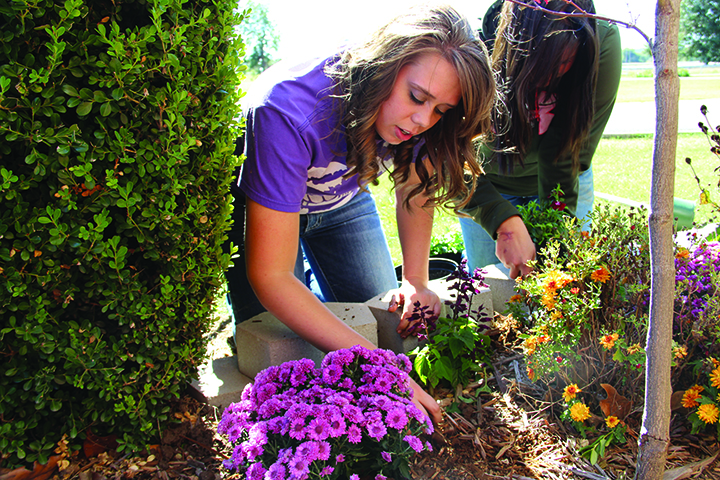
Aggie Club
The Connors 4-H Club was established in 1933 with the purpose of stimulating 4-H club work, providing for 4-H club members - who while at Connors could not attend regular club meetings, and keeping club work fresh in mind. In 1939, Connors 4-H Club became the “Aggie Club,” dedicated to education, recreation and socialization of members and promotion of agriculture. This club evolved over time and took on many names, eventually returning to Aggie Club. By 2016, the group participates in educational and social activities. Members have a hand in creating fun and positive engagements on and off campus, including hosting functions to educate students about career and educational opportunities within the agricultural industry and speaking to prospective students on campus.
Rodeo Club
Connors Rodeo Club was founded in 1969, with the mission of providing a common place of meeting and communion for and among persons having interest in rodeo, and to encourage the spread of interest in and information about the sport of rodeo. The first members are pictured at right.
Agricultural Ambassadors
Founded in 2006 by advisor Debby Golden, the focus of the elite group of Agriculture Ambassadors is to encourage and promote the development of personal growth, principled leadership and career preparation by representing the Division of Agriculture in recruitment, collegiate and community events. Agriculture Ambassadors serve for one semester and may be reappointed to serve in succeeding semesters.
Agricultural Communicators of Tomorrow
In 2013, Connors State College became the first junior college nationally to charter a local chapter of Agricultural Communicators of Tomorrow. Sponsored by Stacy Pearce and Amanda Gray and affiliated with the national organization, ACT is devoted to strengthening agricultural communication students through personal growth, networking, and educational opportunities.
Shotgun Shooting Sports Club
The Shotgun Shooting Sports Club emerged in 2013 as one of the most active clubs on campus, hosting weekly 5-stand or trap and skeet shoots for members and guests, and regional tournaments for area 4-H and FFA teams. Founded by Rob Holtfreter, the club is open to students, faculty and staff, and allows members to share common interests and develop shooting skills. Club members have an opportunity to learn six separate shooting sports, including: International Skeet and Trap, American Skeet and Trap, Five-Stand, and Sporting Clays.
Ducks Unlimited
In fall 2016, agriculture instructor Brandon Miller and Dean of Students Mike Jackson founded a local chapter of Ducks Unlimited. Initiated as the first collegiate chapter in a two year college in the state of Oklahoma, this group promotes the conservation and stewardship of duck habitats and raises awareness of wetland resources and public education.
The Farm Through the Years

In 1908 the Citizens of Warner provided 160 acres for the Connors agricultural high school and farm.
The agriculture department was supplied with soil physics apparatus, gasoline engines, farm tools, implements and machinery necessary for up-to-date and practical instruction, while the farm was fitted with the latest and best cream separators, milk testers, churns, butter workers and other necessary equipment.
In 1920, 100 acres were used for growing crops, including oats, cotton, corn and legumes of cow peas, soybeans, velvet beans and mung beans. In 1925, 12 acres were set aside for research purposes, and experiments were conducted on four year crop rotation and various commercial fertilizers. By 1930, the farm had increased to 225 acres, while crops of Texas Red and Fulghum variety seed oats were grown on 6 dedicated research acres. Under the direction of President King, in 1929 a dam and water containment pond were constructed to provide an “unlimited supply” of water to campus. However, drought and the Dust Bowl followed, and by the mid-1930s, the water supply could not meet the college needs. Students had to carry water from home, area ponds, and the coal pits west of town for both personal use and for the college livestock.
In 1937, tragedy struck when the campus barn burned, killing most of the college’s livestock. A new barn was constructed in 1938, with wings for beef and dairy. The college farm produced nearly all feed for the livestock, making it possible to carry on a balanced crop and livestock enterprise. By 1945, the 320-acre farm provided food for the college and turned a small profit.
A dairy barn was constructed in 1948 to house Holstein, Jersey and Guernsey cattle. Students working at the dairy milked twice per day, and lived on the barn’s second level. The college herd provided enough milk to serve the campus needs and had high USDA ratings.
During the 1960s, campus grew: cattle lots were turned to parking lots and buildings were constructed on land previously used by the farm. The late 1970s and 80s brought a renewed interest in production agriculture. Purebred beef herds replaced dairy herds. Arenas and barns were constructed; equine instructors and rodeo coaches were hired.
In 1994, Connors acquired 1,316 acres of land through the Farmer’s Home Administration. Located south of Warner, the land consists of mixed hardwoods, lakes, grass, and wetlands, of which 160 acres were dedicated for migratory waterfowl. The ranch provides hands-on lab experiences for students, and community group activities, and is the site for summer science academies. Dr. Stuart Woods and CSC partnered with the Noble Foundation to plant fescue grasses and develop the existing wetlands. In 2002, the ranch was named the Gary Harding Research Ranch. In 2014, President Tim Faltyn directed the construction of a Shotgun Shooting Range near the wetland and, in 2016 was named in honor of Dr. Woods.
Horticulture was introduced as a course in 1923 and continued to be taught through the decades. During the 1970s, a teaching greenhouse was built for hands-on instruction year-round. In 2002, under the guidance of President Donnie Nero, the greenhouse was retrofitted and the program expanded to include a full-time horticulture instructor and an additional greenhouse and facilities.
In 2013, under the guidance of President Tim Faltyn and Bull Test Director Blake Nelson, new bull test facilities were constructed and the sale facility remodeled. Coach Todd Trennepohl and Interim President Dr. Ron Ramming oversaw the rehabilitation of a horse barn for use by the beef show team in 2016. Today, the college campus and farm encompasses more than 1,700 acres.
Gary Harding Research Ranch
Livestock of Historical Note
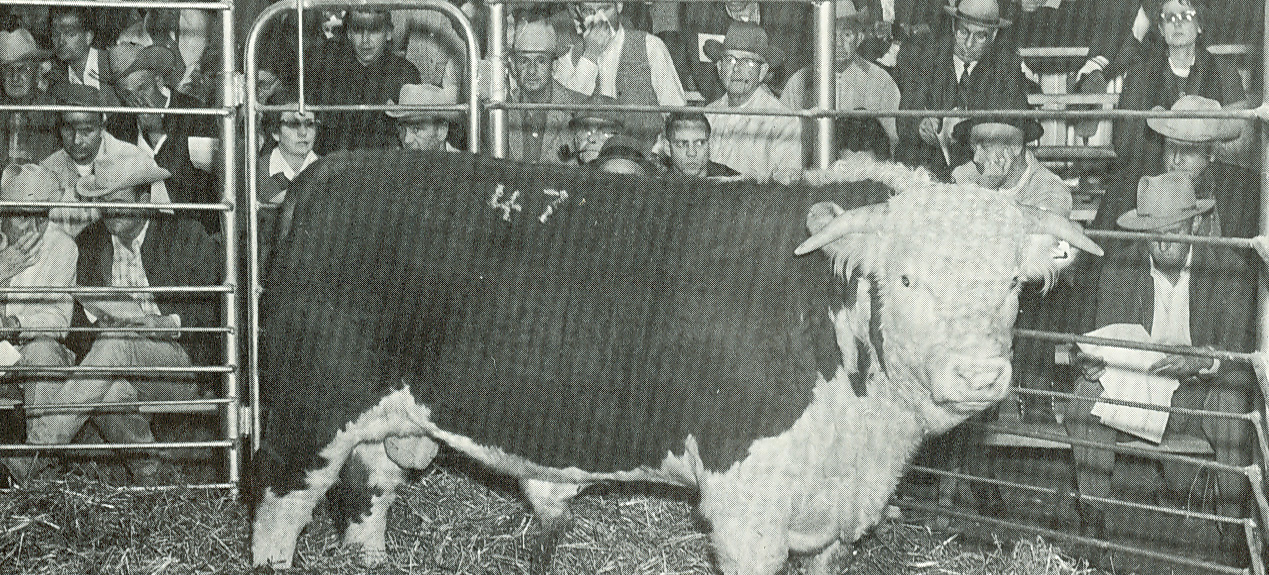
Over the years, various prized animals made their mark on the course of the college’s livestock history.
In the 1920s, the farm inventory listed a herd of Jersey cattle, Duroc Jersey hogs, Percheron horses, poultry and mules. By 1938, Holstein and Hereford cattle were added to the roll, and by 1940, the livestock program had doubled in just a two-year span. In the 1950s, Poland China pigs were added to the farm. By 2016, national champion Suffolk sheep, Santa Gertrudis, Angus, and Simmental cattle, a commercial cattle herd, and Duroc, Hampshire and crossbred hogs can be seen on the landscape, in addition to the student and producer-owned horses for competition and training, and producer-consigned bulls for sale.
Swine Prince
In 1950, the Connors Duroc herd was among the top five in the nation, a fact that instructor Robert Hodges and farm superintendent Clyde Fox attributed to its herd boar, Squire Prince, 369147. Weighing in at more than 900 pounds, Squire Prince was the sire of several 1950 Oklahoma Free State Fair winners, including the champion boar and sow. In fact, Squire lost the grand champion title that year to his own son, when just a year earlier, he won the State Fair’s first ever senior yearling honors. The boar was ultimately sold to the Veterans Administration Training Program in Westville, Oklahoma, to help develop a Duroc herd.
Jane
Treasured among the college’s elite, eleven-member, registered Holstein cattle herd in the 1950s was Fayne Ormsby Piebe Pietertje, or Jane, to the farm boys who took care of her in 1952. Jane had two records of more than 500 pounds of fat in 305 days of two-a-day milkings. She was classified “very good” next to the highest official rating for type. In 1953, the herd completed a year’s test with an average of 382 pounds of butterfat and 11,732 pounds of milk produced.
Durocs to Nicaragua
In 1953, two gilts and one boar from Connors’ Duroc herd traveled to Managua, Nicaragua, by air freight to begin a foundation herd in the country. The project began when Paul Adams, head of the 4-H Extension Department in Managua, contacted the Oklahoma A&M Extension Specialist about the Connors’ herd, to get the best possible pigs available for a foundation herd. Approval of the Oklahoma State Veterinarian had to be obtained before the animals could be transported. When the pigs arrived in Managua, they were taken to the farm of Milan Sigmund.
Queenie
Although not considered livestock, no description of the college stock would be complete without the story of Queenie, the farm dog beloved by ag students, farm workers and a legend in her own right. The mixed breed dog had the run of the Warner campus farm starting in 1979, when her family moved and left her behind. She moved to the campus and quickly negotiated a spot on the breezeway of the home of vice-president A.D. Stone. Pictured with her manager and co-worker Walker Hopkins, at right, Queenie was in charge of getting all bulls in the test up for inspection, rounding up errant calves and sows who had escaped their pens. She was also the official campus mouser. Queenie seldom rode in vehicles and hated to be photographed.
Santa Gertrudis Cattle
Gert cattle were introduced to the herd in the 1980s by Gary Harding, and success with their exhibition by the farm crew in the early 2010s led to the establishment of the cattle show team. Among those successes: a heifer, Betty 3-0, was the 2011 National Champion heifer calf at the Dixie National in Jackson, Mississippi. H&B Hef-A-Nizer was named the Grand Champion Santa Gertrudis Bull at the Tulsa State Fair that same year. In 2013, the show team exhibited the International Grand Champion Santa Gertrudis Bull, CSC Hitch Hiker 127, at the Houston Livestock Show.
Extension to the Community
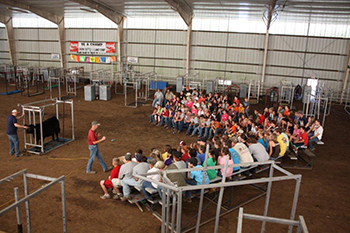
Be a Champ Camp
During the 1980s, judging coach Jerry McPeak and wife Veda began holding “Be A Champ Cattle and Lamb Camps” during the summers on the Warner Campus. The goal of the camps was for young people to gain confidence in showing their animals as well as learning current grooming and showing techniques. Since its inception, more than 14,000 young people have traveled from across the United States and Canada to attend the camps.
Bull Test Sale
In 1961-1962, Robert Hodges initiated the Bull Performance Project, under the direction of President Jacob Johnson. Hodges called it a “livestock breeder promoted situation.” Area breeders and Hodges organized the first test with the intent of improving the quality of livestock in eastern Oklahoma.
Owners put their bulls into the test to find the most rapid weight-gaining animals in a controlled time period. At the end of each test period, a sale is conducted to provide cattle producers in the region with quality herd sires.
“To put dollars in your jeans, buy a bull with dollars in his genes.
”
The first bull sale was conducted in a rented circus tent. An Agriculture Activities Building was built in 1964, which included a sale ring, five-hundred seat bleachers and a food service area.
The Bull Test was discontinued in 1974 due to the cattle crash of the 1970s. Gary Harding was hired to revitalize the program.
More than 50 years after it was begun, the Bull Test still provides area ranchers and farms with quality, performance tested bulls and provides agriculture students with hands-on ag production and sales experience.
Aggie Day
Since its inception in 1947, Aggie Day annually brings thousands of high school students to campus for interscholastic competitions. Held on the first Thursday in April, 4-H and FFA members from across Oklahoma, Missouri, Arkansas and Texas compete in 18 distinct contests. In the fall of 2006, the Division of Agriculture under the leadership of chair Debra Golden, initiated Junior Aggie Day as an interscholastic competition for eighth, ninth and tenth grade students. Competitions include agri-science and animal science quiz bowls, opening ceremonies contests, and some senior-level events in a more limited form.
Equine Technology Program
Initiated by Dr. Gary Updyke and developed by Fred Williams, the Agricultural Equine Program began in 1979 as an Associates of Applied Science degree preparing students for a professional position within the horse industry. The program has since adapted to an Associates of Science in Agriculture Equine and taken on the transfer function, while continuing to prepare students for the equine industry with theory classes and hands-on experience during daily riding and training labs. By 2016, more than 2,500 colts have been started by equine students, all owned by trainers and breeders throughout the nation.
Committed to the Future
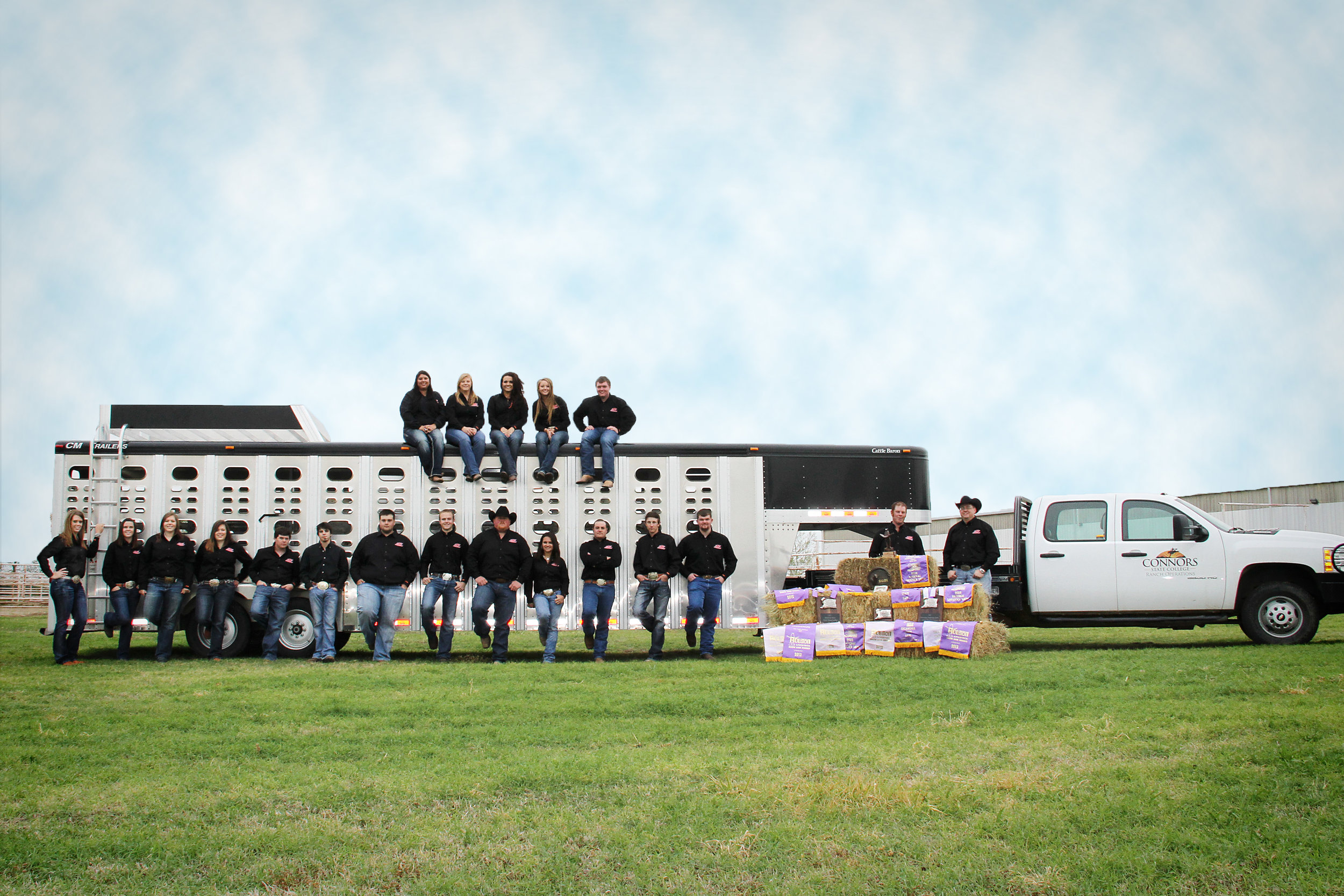
The life of Connors State College has been one of interesting chapters.
It is the kind of story that leaves one wanting to see what is on the next page. As we decide what is next for this truly unique and wonderful college, we can turn to face our future with an assured confidence that can only be had by those who know who they are and what they stand for. Because our history is one of such strength, the days, months, and years that lie ahead are sure to be filled with success and accomplishments. We need only look to the core values that were forged by the generations that came before us to help us focus on that which matters most. Excellence is sure to be found in the pursuit of service, leadership and legacy. With our core values in mind, Connors State College aspires to do three things in our second century.
First, we seek to develop degrees and activities that will connect our students with their future. A student who emerges with a degree from Connors State College is equipped with more than just a credential, but also with the knowledge and experiences necessary to succeed.
Second, we will do all we can to provide facilities and resources that give our students the confidence they need to think for themselves in any situation. Learning happens everywhere on our campuses. To be all we can be as a college, we must provide places for people to gather in the name of learning, fellowship and community. In addition to facilities, giving our people the materials, time and tools they need to succeed is essential to making success an attainable goal for everyone involved in the learning process.
Finally, and most importantly, we will surround our students with people who care as much about their success as they do. As we have recounted our history, that is where our greatest strength has been, and will always be, our focus on people The people of Connors have made the difference. Never losing sight of this fact will be crucial to our success.
We are a college of hundreds that serves thousands. We are a college that serves our community as we serve our nation as one of the top colleges in the country. We cannot wait to see what the future holds.
–Dr. Tim Faltyn, President 2011-2016
Over the years, numerous individuals and businesses have dedicated funding, livestock, scholarships, consulting, time, advice and more to the building of Connors State College’s agricultural programs. A list would forever be incomplete, but please know your support of our programming has not gone unnoticed.
Agriculture Hall of Fame Historical Display developed by Stacy Pearce, Debby Golden and Daniel Edmonds, with assistance from Jake Walker, Jake Lawson, Brandon Miller, Todd Trennepohl, Nolan Hildebrand, Jon Dallis and Dr. Ryan Blanton, and historical details provided by Margaret Rigney, Gary Harding, Jerry McPeak and Dr. Ron Ramming
